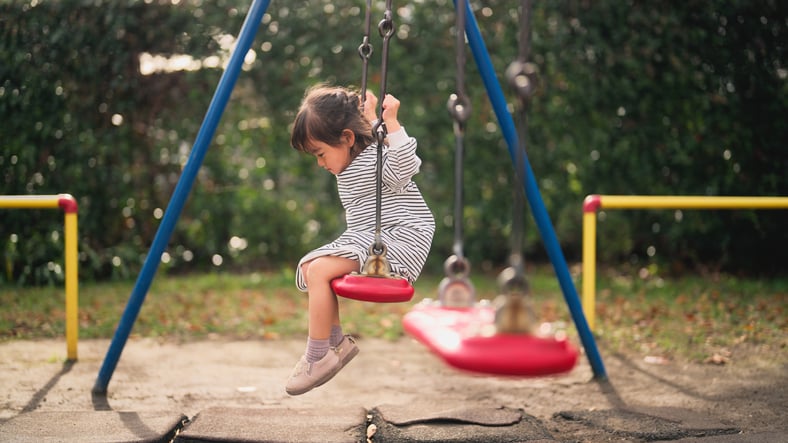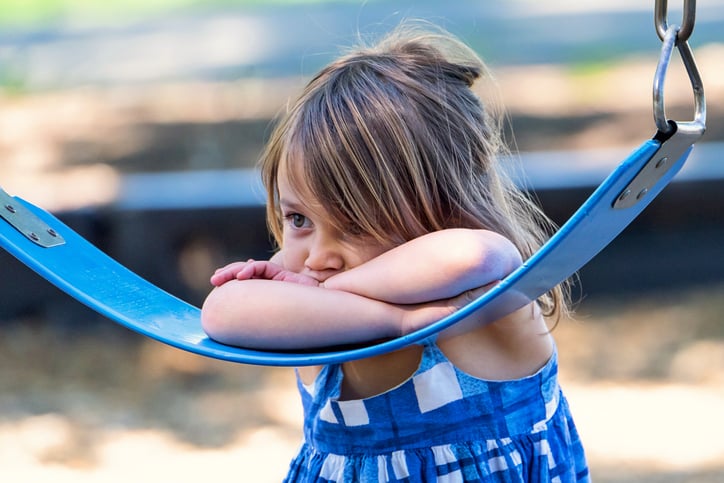Recognizing Signs of Autism in Girls
Autism in Girls Can Look Different than in Boys: Support for Girls Sometimes Needs to Look Different Too
Check out our free handout on this topic, Specific Support Strategies for Girls With Autism.
While significant time, effort, and energy have been devoted to identifying stereotypical cases of autism in young children, many girls on the spectrum remain undiagnosed for longer than their male counterparts due to biases in what are generally considered the most common traits of autism. Professionals are actively working to determine why this is the case–and the reasons may surprise you.
Research suggests that diagnosticians may be able to catch the noticeable traits of autism (such as language delays, difficulty socializing with others, limited eye contact, behavioral challenges, and learning deficits) early on; however, these characteristics are often more pronounced, noticeable, and readily detectable in boys on the autism spectrum than in girls.1 As a result, this discrepancy may contribute to girls receiving a diagnosis of autism later than boys, delaying the start of beneficial treatment programs and early intervention services for females on the spectrum.
General Traits of Autism in Children
In general, children on the autism spectrum frequently exhibit increased social, communication, and behavioral challenges compared with typically-developing peers their age. Common characteristics of autism in the early childhood population include:
- Fixed interests leading to discussion of a limited number of topics
 Repetitive behaviors–such as lining up toy cars in a row, singing one line of a song over and over, rocking back and forth, spinning around, flapping one’s hands, or pulling hair
Repetitive behaviors–such as lining up toy cars in a row, singing one line of a song over and over, rocking back and forth, spinning around, flapping one’s hands, or pulling hair- Executive functioning (EF) difficulties–including challenges with planning, organization, self-monitoring, time management, attention, working memory, and flexibility1
- Communication and behavioral delays (e.g., children on the autism spectrum may not develop language skills as readily as their neurotypical peers and often display challenging behaviors–such as aggression towards others, self-injurious behavior, or socially inappropriate actions, like taking clothes off in public)
- Sensory differences, including sensory-seeking and sensory-avoiding behaviors–like stimming, covering one’s ears in loud venues, or placing inedible objects in the mouth
- Meltdowns, rigidity, and difficulty with changes in routine
- Social-emotional deficits and a limited ability to engage and relate with others
- Reduced eye contact and impaired responding to one’s name
Although children on the autism spectrum may struggle with a combination of these characteristics, many are able to make meaningful gains toward their goals for long-term success in academic, social, and behavioral contexts with the support of individualized services tailored to meet their unique needs.
Specific Characteristics of Autism in Girls
Among girls specifically, the traits of autism can present more subtly and may not be identified–or as readily noticeable–early on. Girls, in fact, often display better eye contact and may be more socially motivated to “fit in” with their peers compared to boys on the spectrum.2 Therefore, care should be taken to explore nuanced presentations of autism in females.
Typical characteristics of autism in girls can include:
- A tendency towards passivity, shyness, and a higher likelihood of social avoidance
- Heavy reliance on peers to guide, lead, and initiate social interactions and conversations 3

- Exhibiting sensory sensitivities–such as being affected by loud noises, bright lights, physical touch, and/or strong smells
- Becoming easily frustrated, having a “short fuse,” and demonstrating difficulty with bouncing back after receiving disappointing news or experiencing changes in routine
- Expressing challenges in making, keeping, and maintaining friendships
- Communication difficulties and speech delays, which may be more subtle in females than males on the autism spectrum
- After-school meltdowns, increased irritability and reduced resiliency
- Special interests may be less obvious or masked by a girl’s desire to “fit in”4
- Executive functioning (EF) deficits–including challenges with planning ahead, time management, and working memory
- Co-occurring symptoms of anxiety and depression
- Obsessive behaviors can be present and girls may show a strong attachment to inanimate objects–such as a favorite blanket, teddy bear, or postcard from a location of particular interest
Studies indicate that girls may be able to hide or “mask” their autistic traits more easily than boys on the spectrum, and, from an early age, girls with autism might develop an ability to camouflage into their surroundings by copying the words, actions, and/or mannerisms of others.4 This can make the diagnostic process more difficult, resulting in an increased incidence of misdiagnosis (with labels like anxiety, depression, ADHD, or OCD) before a proper autism diagnosis is reached.2&3
By focusing on identifying the common traits of autism in young girls from an early age, however, the diagnostic process can be streamlined, and the frustration of receiving unnecessary misdiagnoses can be prevented and avoided. Treatments designed to support specific areas of difficulty for girls on the spectrum should be prioritized too.
Social Isolation and Burnout in Girls on the Spectrum
There is often a higher prevalence of social isolation, fatigue, and burnout among girls on the autism spectrum compared to their typically developing peers, and–while many different factors contribute to this–the pressure of social situations, societal expectations, and sensory overload are among the most common culprits.5
Symptoms of burnout and fatigue in girls with autism may include:
- Hypersensitivity to smells, touch, lights, and sounds
- Increased meltdowns
- Headaches, social isolation, and/or a temporary loss of speech
Masking one’s autistic traits and suppressing self-soothing stimming behaviors (such as rocking back and forth, rubbing hands, or playing with one’s hair) can lead to increased rates of burnout among neurodivergent girls as well. Avoiding these triggers when possible and developing a strategic plan for decompressing after socially draining events are helpful ways to reduce the likelihood of social isolation, fatigue, and burnout from occurring. It can be beneficial for autistic girls to avoid prolonged exposure to sensory-rich environments, such as loud concert venues with bright lights or crowded restaurants with high levels of sensory input and stimulation.

In Summary
Studies have demonstrated that autism can be tricky to distinguish in the early years of a child’s life, and girls on the spectrum are more likely to go undiagnosed for longer than boys.2 In this case, it is important to consider the traits that girls with autism may be more likely to present with. Some of these include sensory sensitivities, a tendency towards shyness, reliance on others to lead in social situations, after-school meltdowns, and extreme interests or passions in specific areas.
While it can–at times–be challenging to identify autism in young girls, research is being conducted in this area to support the inclusion of traits that are more commonly described and reported among females with autism. With adequate support and interventions, girls on the spectrum can make significant gains towards their goals for long-term success in social, academic, employment, and leisure settings.
What are some common traits you have noticed in girls on the autism spectrum? Let us know in the comments below.
And don't forget to look at our free handout: Specific Support Strategies for Girls With Autism
References
- https://www.iidc.indiana.edu/irca/articles/characteristics-of-individuals-with-an-asd.html
- https://childmind.org/article/autistic-girls-overlooked-undiagnosed-autism/
- https://www.verywellhealth.com/signs-of-autism-in-girls-260304
- https://www.healthgrades.com/right-care/autism/warning-signs-of-autism-spectrum-disorder-in-girls
- https://www.autism.org.uk/advice-and-guidance/topics/mental-health/autistic-fatigue/autistic-adults

Kenna McEvoy
Kenna has a background working with children on the autism spectrum and enjoys supporting, encouraging, and motivating others to reach their full potential. She holds a bachelor's degree with graduate-level coursework in applied behavior analysis and autism spectrum disorders. During her experience as a direct therapist for children on the autism spectrum, she developed a passion for advocating for the health and well-being of those she serves in the areas of behavior change, parenting, education, and medical/mental health.




